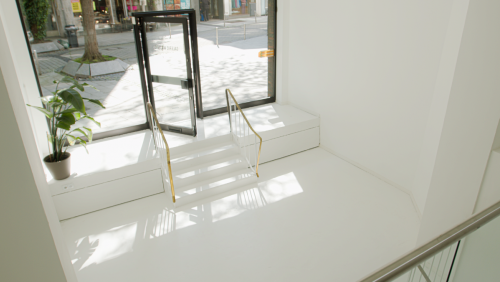
ALESSANDRO BOSTELMANN, WITALIJ FRESE
CORPOREALITIES
Project Info
- 💙 HELDENREIZER Contemporary
- 💚 Marcus Trautner
- 🖤 ALESSANDRO BOSTELMANN, WITALIJ FRESE
- 💜 Marcus Trautner
- 💛 Bernhard Rohnke
Share on
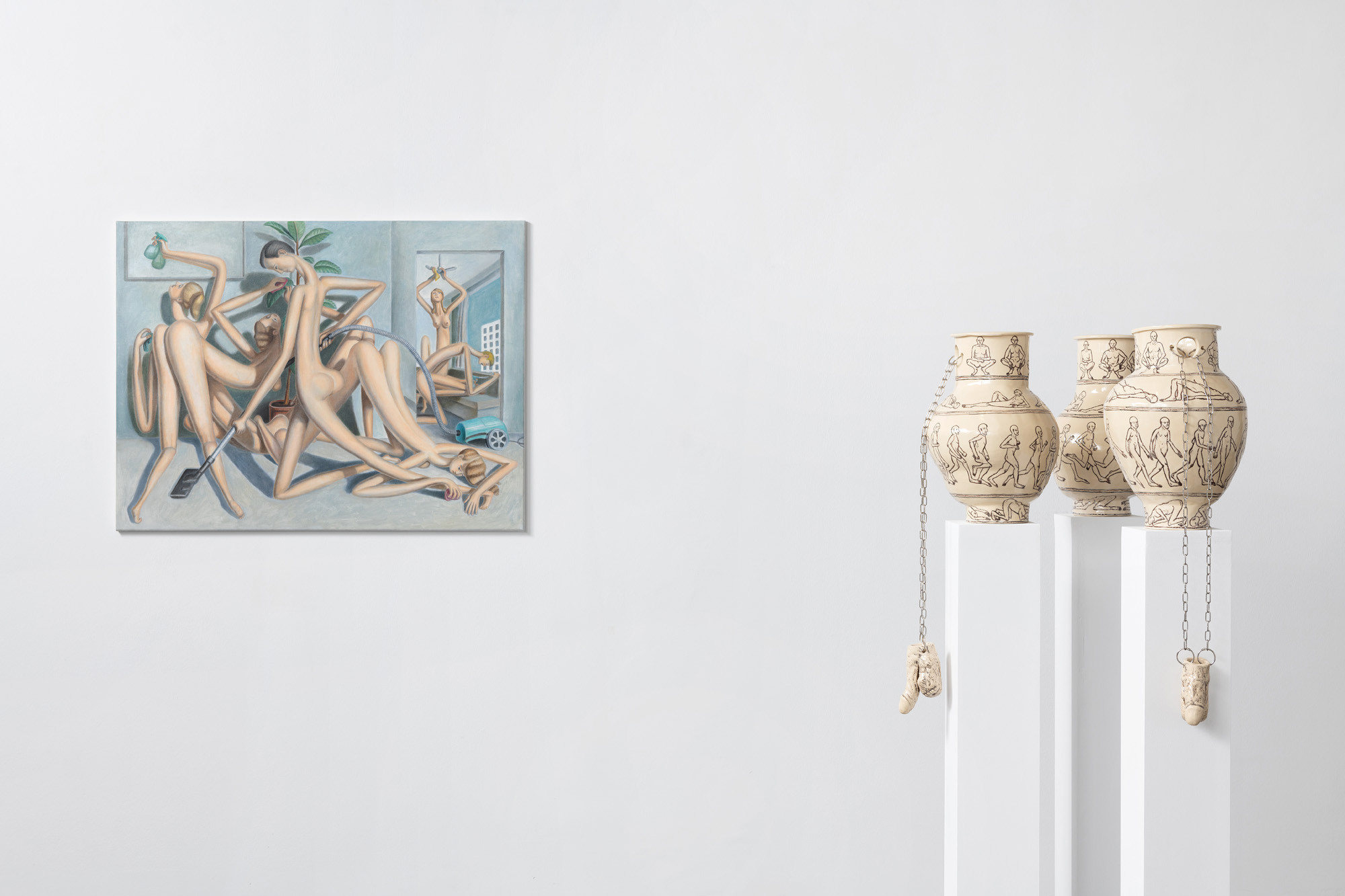
Installation View
Advertisement
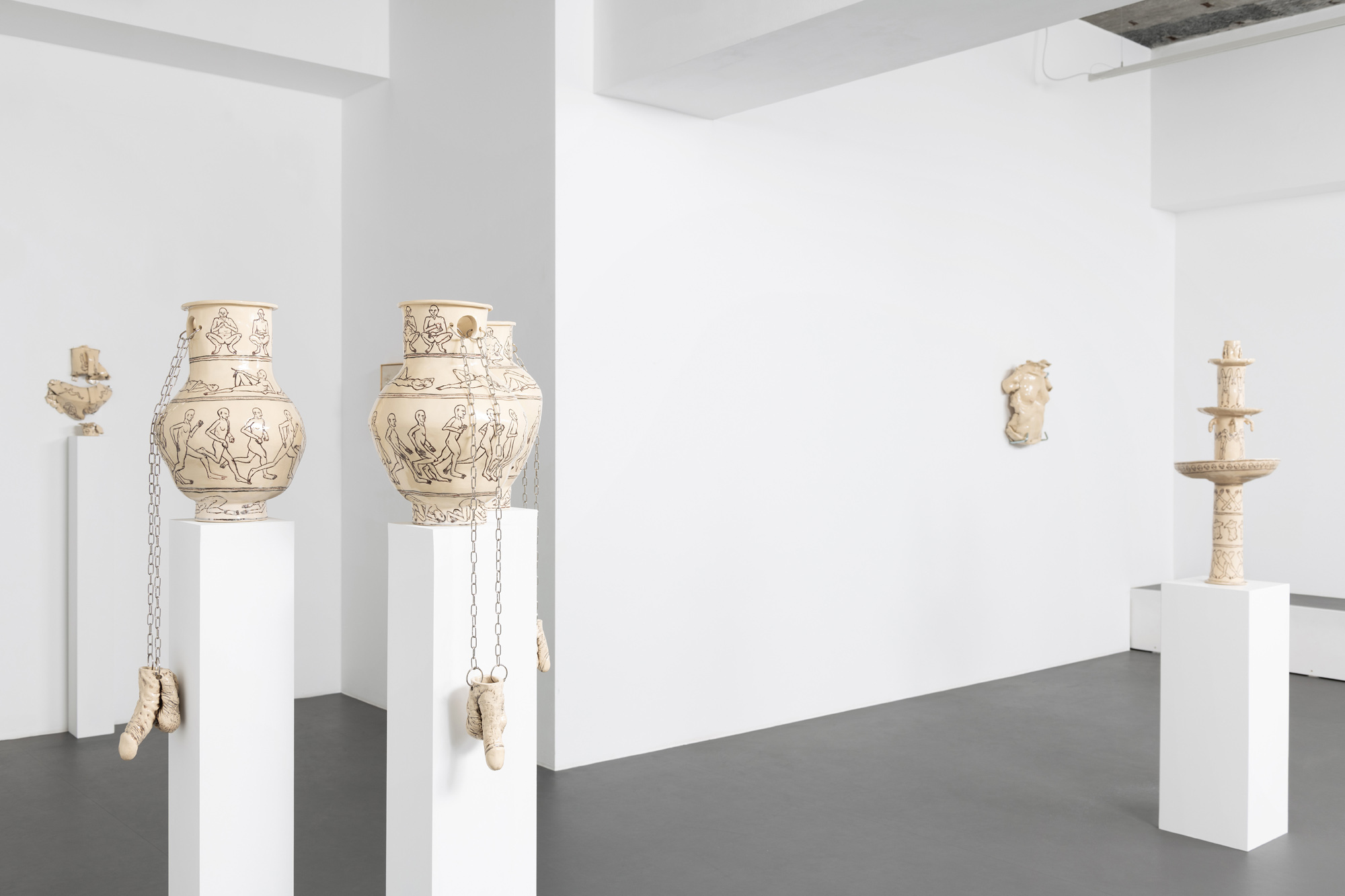
Installation View
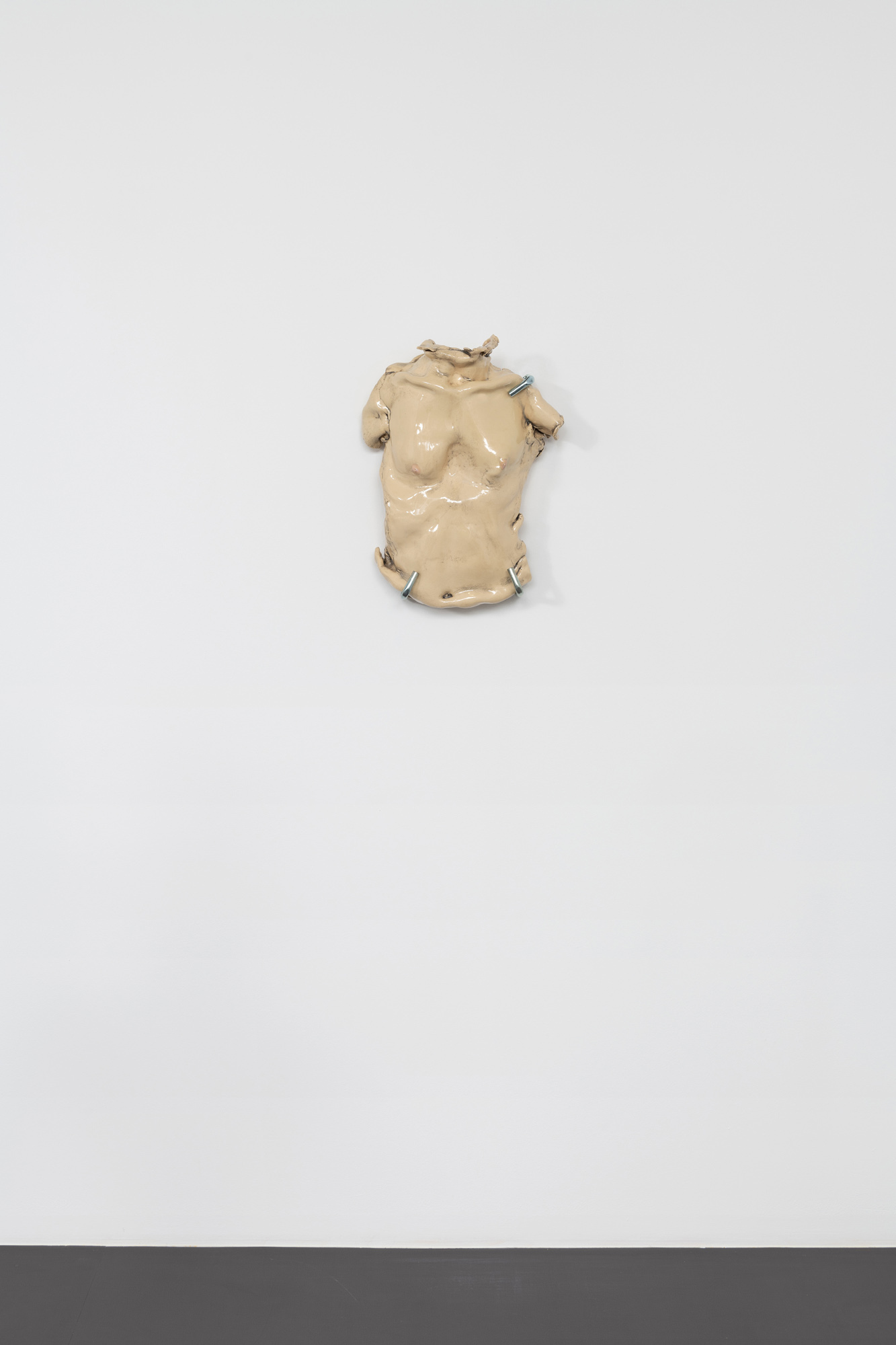
Witalij Frese, Last auf der Brust, 2023, glazed ceramic, 50 x 40 x 25 cm
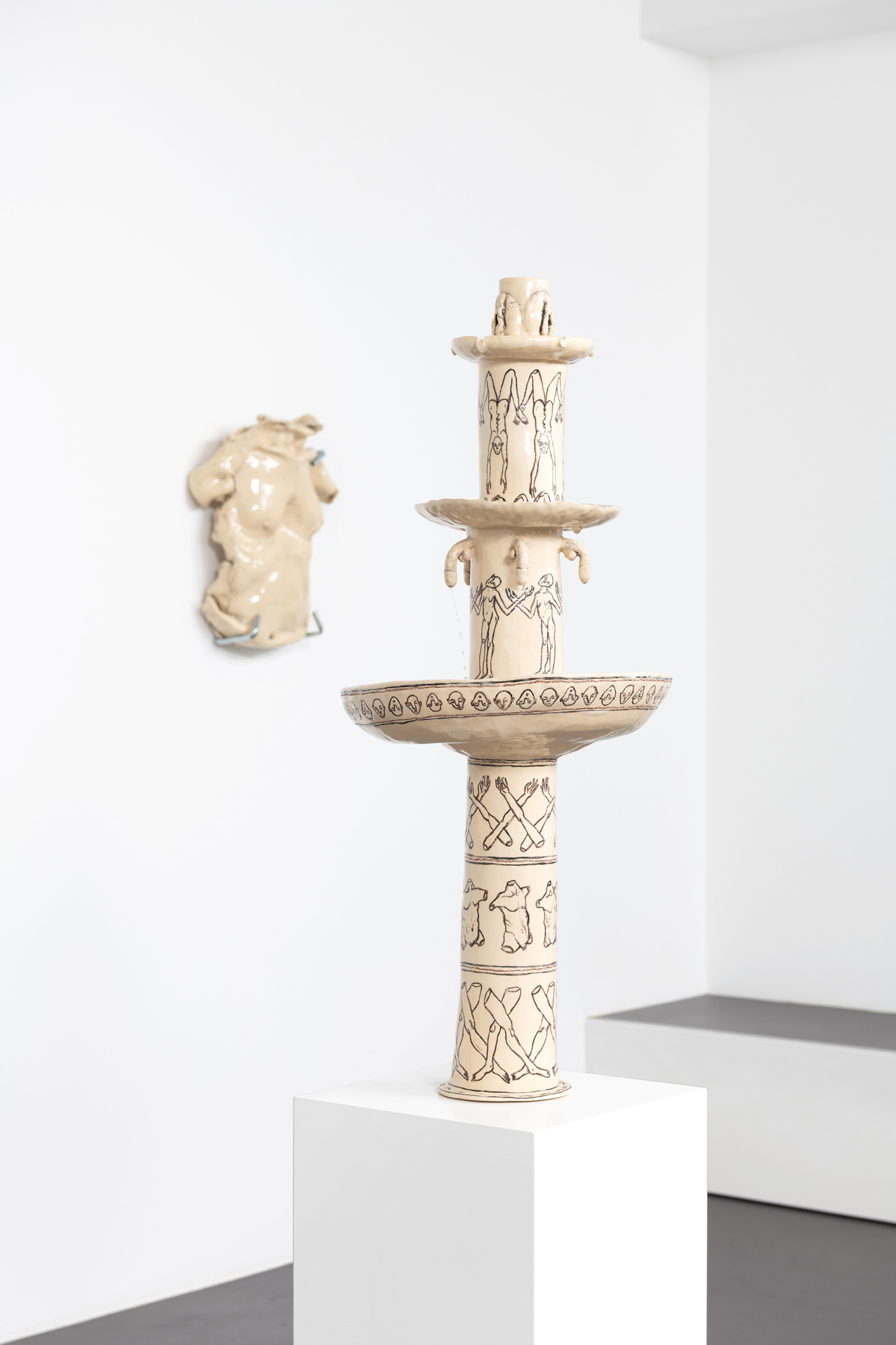
Installation view
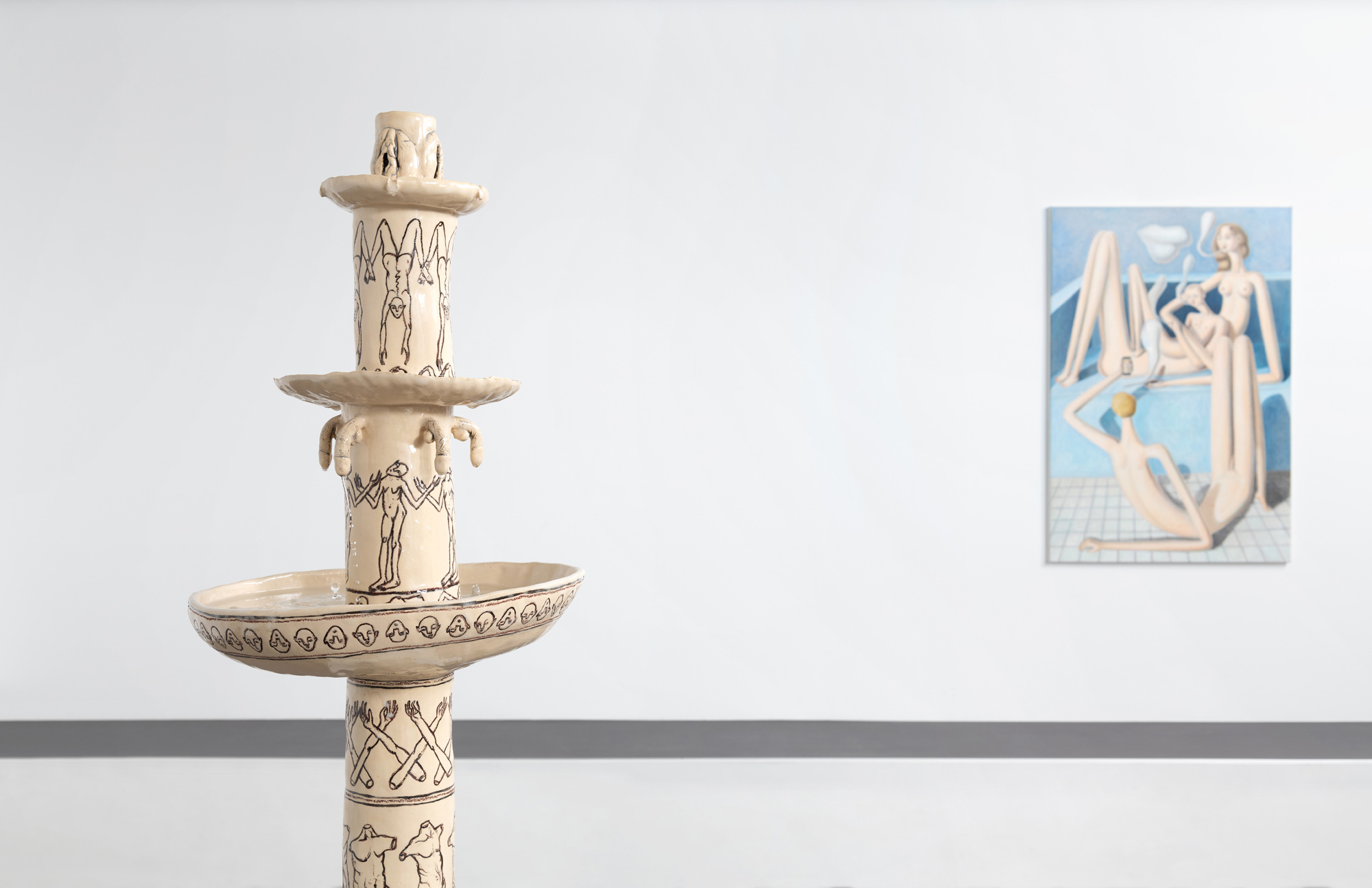
Installation view
The individual within the vast cosmos of humanity is central to the artistic endeavors of Alessandro Bostelmann and Witalij Frese. In his manneristic and surreal-seeming paintings, Bostelmann highlights the absurdity of human existence trapped within the gravitational pull of societal constraints and stereotypical behavior patterns. Conversely, Frese dedicates his ceramics to probing the essence of physical existence and the accompanying drive for change. Both artists delve deeply into exploring physical reality and the ensuing quest for identity. In the exhibition Corporealities, the works of both artists are juxtaposed for the first time, engaging in a dynamic dialogue.
Nude, disproportionate, grotesquely contorted bodies that often merge into a carnal lattice of plump breasts, impeccable buttocks, and hairless openings and gaps characterize their art. The expressively elongated body dominates Alessandro Bostelmann's (*1992 Munich, Germany) narrative and form. Oversized and confined within a disproportionately small pictorial space, his figures navigate their lethargic existence in depicted everyday scenes: they listlessly clean houseplants, tidy sofa covers as seen in Room Cleaning Orgy (2024), or indifferently surf on their smartphones while smoking cigarettes as in Dysfunctional Family (2024). Upon closer examination, the physical closeness and touches emerge as consequences of spatial constraints, making it nearly impossible for any figure to evade or fully straighten without bursting through the pictorial frame. Thus, in the artistically staged world, the body becomes an impediment where the subject and its environment figuratively chafe against each other. These spatial constraints metaphorically point to social structures or ingrained societal ideals limiting the individual. Employing his characteristic mannerist representation, Bostelmann depicts humans as puppet-like, physically standardized beings within a fabricated reality, directing attention to the contradictions of modern subjectivity and the intertwining of mental and bodily experiences and body and identity. In Bostelmann's art, the body serves more as a shell, a vessel for fulfilling the enforced heteronormative obligations reflected in the portrayed stereotypical actions. Alongside their stereotypical behavior, his figures appear consistently distant, clashing with socio-culturally conditioned ideals and encoded expectations: parents disinterested in their progeny, children not behaving child-like, and orgies transforming not into calculated boundary crossings but into celebrations of prudishness and conformity. In Bostelmann's works, body and self no longer form a cohesive unit belonging to separate realities. His art does not present an ideal but reflects a society engulfed in the whirlpool of empathy erosion and mechanistic alienation.
Witalij Frese's (*1992 Alexandrowka, Russia) artworks thematize the human body as a dynamic, myth-enshrouded entity perpetually in a state of exploration. His ceramic works, executed in black and white, fluctuate between vulnerability and unreserved directness. Frese's artistic practice reveals the continuous exploration of physical existence and the desire for constant self-reinterpretation. By concentrating on individual body parts, he deconstructs and reconfigures the human body to convey a spectrum of emotional states. His explicit and hybrid body representations, adopting the formal language of ancient Greek and Roman ceramics, are marked by a skillful amalgamation of sculptural and decorative elements that sensitively merge female and male traits. In his sculptural fountain construction Aufbau/Abbau (2024), he disrupts the established gender order, aligning males and females on equal footing and uniting them through the cycle of a shared fluid encompassing both female and male genitalia. Frese's depiction of sexual organs initiates discussions on themes such as shame and the challenge of outdated gender structures deeply embedded in traditional role perceptions. The assignment to specific bodily features critically influences an individual's identity formation and self-perception, especially regarding the need for physical and social belonging. A body that feels alien and dissonant leads to isolation and unrest. Yet, the conventional portrayal of the naked human body also offers opportunities for reimagining. This perspective is illustrated in Frese's work Last auf der Brust (2024), a life-sized torso acting as a physical self-portrait of the artist, forging a bridge between genders and generations and offering an alternative to the binary ideal as perpetuated through centuries by works like the Belvedere Torso. The figures in Frese's creations, often hairless and detached from reality, navigate between genderlessness and hybridity. They either interact or linger in solitude, disconnected from their bodily context. Frese's artistic return to ancient vessel forms and stylizations deliberately taps into the visual memory and symbolism of antiquity. He intertwines mythological motifs with personal inquiries into corporeality, thus reflecting on the complex historical significance of the body, shaped by cultural, political, and religious discourses.
Marcus Trautner



